Some very loose notes -
Updated 14 May 2025 with the busts of Thomas Bodley at Oxford University
The Derivation of a particular Type of Roubiliac Socle.
This type of Socle is unique to Roubiliac with a couple of exceptions where versions which are quite close but not identical are used twice by Joseph Wilton (on the busts of Leake Okeover and Lord Chesterfield - see the illustrations below).
This post is a series of notes and images which needs refining I will attempt to return in the future.
The first illustrated use of a version of this type of socle (which was later adapted by Roubiliac) that I can find is in an Engraving of the bust of Charles I.
This unfinished engraving perhaps of c.1630 - 40 has been attributed to Robert van Voerst.
The bust proposed as after Dieussart (1595 -1661). The shape of the socle would seem to confirm that suggestion and can be seen on several busts by Dieussart -
The bust of Elizabeth of Bohemia sister of Charles I in the V and A is just one example (illustrated below).
"The identification of the bust in the engraving with that by Dieussart is not in fact at all certain, and it may well have been the bust by Bernini (information from Jonathan Marsden). In this case it cannot have been engraved by Voerst, who had died before the bust reached London. The alternative possibility is John Payne".
Text above from the BM website.
Roubiliac used the socle on his terracotta bust of Charles I at the Courtauld Gallery (see the illustration below).
Image of the engraving courtesy British Museum.
another is in the Royal Collection.
https://www.britishmuseum.org/collection/object/P_P-2-11?selectedImageId=163819001
For a bust by Dieussart of Henrietta Maria see -
see also Plaster Casts of Bernini's Bust of Charles I see -
https://www.burlington.org.uk/media/_file/generic/article-17642.pdf
The Marble Bust of Charles I.
Attributed as a version by Jan Blommendael (c.1650-1699).
possibly after Dieussart.
In the Grand Vestibule Windsor Castle.
Text adapted from the Royal Collection website https://www.rct.uk/collection/35856/charles-i-1600-1649
It has long been thought to be a copy of the bust of Charles I made by Gianlorenzo Bernini in 1636, which was destroyed in the Whitehall Palace fire of 1698.
Opinion remains divided on this point: This bust does not show the sophistication, the illusionism or the exceptionally fine cutting characteristic of Bernini's work of the 1630s.
It is also questionable whether Blommendael, who was never in England, may have had an opportunity to model a copy of Bernini's bust before its destruction.
It is possible that Bloemendael used the engraving to
In his own portraiture, William
III was inclined to follow the poses and settings designed for his grandfather
Charles I, and it is possible that he commissioned these two busts as an
assertion of his legitimate right to the throne. Both busts may be copies.
Provenance.
Sold Christie's, London, 30 July 1881, lot 104 (wrongly
stated in the catalogue to have been at Newstead Abbey);
B.W. Currie, Minley Manor, Hants.
Sold Christie's, London, 27 March 1937, lot 63 (with RCIN
35856). Bought by HM Queen Elizabeth".
This unfinished working proof is an impression of the most ambitious engraving made of the busts of Charles I, another is in the Royal Collection.
The attribution of this print to Voerst had seemed sure. Stylistically it belongs to the first half of the seventeenth century; it is printed on paper of that period; and there was no-one else in England in the 1630s capable of engraving to this standard.
The identification of the bust with that by Dieussart is not at all certain, and it may well be after the Bernini bust (information from Jonathan Marsden), but given the shape of the socle which was used frequently by Dieussart I think it most likely by Dieussart.
If the bust in the engraving is after the Bernini bust, then cannot have been engraved by Voerst, who had died before the Bernini bust reached London. An alternative engraver suggestion is John Payne.
Some of the text above adapted from Antony Griffiths, 'The Print in Stuart Britain', BM 1998, cat.43.
................................
The Royal Collection Bust of Charles I
suggested as a copy of the Dieussart bust by Jan Blommendael (c.1650-1699) made as a pair to a bust of William III also by Blommendael.
This would certainly explain the differences in the base and socle.
This bust has a rather weathered surface.
See the Royal Collection website -
https://www.rct.uk/collection/search#/49/collection/35856/charles-i-1600-1649
.............................
Anima Dannata (the Damned Soul).
after Gian Lorenzo Bernini (Naples 1598 - 1680 Rome).
Previously attributed to Joseph Wilton (1722 - 1803). Is this a bust by Roubiliac?
A Plaster Bust of A Despairing Soul is Lot 18 on the First Day of the Roubiliac Sale of 12 May 1762
The Marble bust; on an Italian black marble (Nero Portoro) socle.
22 in. (56 cm.) high, overall.
Offered by Christie's 7 December 2023.
https://www.christies.com/en/lot/lot-6458288
The Anima Dannata (Damned Soul) was created alongside another
altogether different bust showing an Anima Beata (Blessed Soul) represented by
a young woman in a state of peace, eyes raised heavenward. Both works are today
housed at the Palazzo di Spagna in Rome.
This is dangerous territory but I think that this bust might have been sculpted by Louis Francois Roubiliac rather than by Joseph Wilton.
Roubiliac when after he
visited Rome in 1752 1 he is supposed to have said that compared with Bernini's, his own sculptures
looked ‘meagre and starved, as if made of nothing but tobacco pipes’
The Christie's Catalogue makes the point that the socle is similar to that on the bust of Lord Chesterfield, the bust being (almost) convincingly attributed to Wilton based on a number of factors.
"Wilton was familiar with Bernini’s oeuvre; his surviving sketchbooks include drawings after the Baroque master’s monuments and he is documented as having supplied the Duke of Richmond with two plasters after elements of Bernini’s monument to Alexander VII (Kenworthy-Browne, op. cit., p. 47).
In addition, the shape of the socle in the present lot also points to Wilton’s authorship. Its rectangular waisted form is highly unusual but can be found in several works by Wilton, the closest of which is his portrait of Philip Stanhope, 4th Earl Chesterfield (British Museum, London, inv. no. 1777, 0620.1).
A final element supporting an attribution to Wilton is that the treatment of the reverse, namely the patterns left by the tooling, is comparable to the bust of Philip Stanhope and other known works including his portrait of Dr. Antonio Cocchi (V&A, London, inv. no. A.9-1966) and ‘Bust of a Man (After the Antique)’ (Getty Museum, Los Angeles, 87.SA.110)".
This all seems very reasonable until one looks at the Socles on several of Roubiliac's busts, in particular those of Charles I (Marble in the Wallace Collection and terracotta with wehite marble socle in the Courtauld collections ), that on the marble bust of Shakespeare in the Folger Library, those of Lord and Lady Leicester on the Coke monument in Tittishall Church Norfolk and those on the busts drawn by Nollekens at about the time of the Roubiliac posthumous sale in 1762 (see below).
I. WILTON: fecit:ad Vivum. 1757.
Provenance: Probably commissioned by the sitter, 1757;
given to Sir Thomas Robinson Bt (?1700-77) by Chesterfield;
bequeathed to the BM by Robinson, 1777.
At first glance the socle closely resembles the Roubiliac type socle illustrated on the other busts illustrated here but closer inspection reveals that it is much squatter.
This squatness is even more pronounced on the socle with inset oval panel bust of Leake Okeover by Joseph Wilton(below).
Many of Joseph Wilton's busts had a similarly squat socle but are oval in section (plan).
https://www.britishmuseum.org/collection/object/H_1777-0620-1?selectedImageId=1138345001
Joseph Wilton was born on 16th July 1722 in Charing Cross.
His father, William, was a plasterer who produced ornamental plaster works as
architectural decoration.
William became a hugely successful and wealthy supplier of plaster and papier mâché which was produced in a factory in Cavendish Place. William was successful enough to acquire a substantial country property at Snaresbrook.
After studying in Paris, Joseph Wilton went to Rome, and won the Pope's Jubilee Gold Medal,1750. From 1751 he was increasingly in Flor ence, and by September 1753 was residing permanently with Horace Mann, returning to England in 1755.
Not a great deal is known of his Italian period, but he was well employed by British tourists in making copies after the antique.
He collected casts and moulds of the statues in Florence in a manner parallel or complementary to Matthew Brettingham's activity in Rome, for in England he supplied casts to the Duke of Richmond, Kedleston, and, surely (though they are not documented), to the Royal Academy
........................
To further the Christie's argument - The inscribed bust of Leake Okeover by Wilton has a very similar socle, as does that of his wife Mary.
see -
https://bathartandarchitecture.blogspot.com/2021/02/marble-bust-by-charles-stanley-of-mary.html
But this argument becomes much less persuasive when confronted with the visual evidence regarding the Roubiliac socles pictured here below.
..........
The Marble bust of Leake Okeover (1702 -1765) by Joseph Wilton.
Signed and dated 1762.
It appears to have a squatter version of the Roubiliac Type socle which has an inset oval panel on the front.
Perhaps made to compliment the bust of his wife Mary (images below).
In the spring of 1751, facing debts of about £25,000, he took
off to northern France for almost two years, lodging under the alias ‘Mr.
Scrimpshaw‘ and leaving his wife and trustees to firefight the liabilities.
Mary Okeover (c. 1701 - 64).
nee Nichol.
Marble bust.
Private Collection?
Where is this bust now?
A suggestion of the manufacture of busts is mentioned in the Marble Index by Malcolm Baker pub Yale 2014 Page 184. note 36. - the architect Joseph Sanderson in a letter to Leake Okeover 9 December 1746 -
Info from Country Life 23/30 January and 19/26 April 1964.
"I find among the statuaries that their usuyal price is £30 for a busto only"
It is tempting to think that Leake Okeover was thinking of having busts of himself and his wife carved.
Another pointer to the Roubiliac authorship of the bust of Mary Okeover is the duplication - use of the same drapery on the bust of Elizabeth Maynard on the Maynard Monument at Little Easton Church Essex of 1746. see below. - The date I suggest is more than a coincidence.
The repetition of the use of draperies is another
feature which as far as I know appears exclusively on Roubiliac's busts.
The bust of Mary Okeover is Illustrated in the Exhibition Catalogue: The Treasure Houses of Great Britain, 500 Years of Private Patronage and Art Collecting, 1985.
The entry in the catalogue which was written by Malcolm Baker makes the assertion that this bust was carved by Anglo/Danish Sculptor Charles Stanley with the socle carved by Joseph Wilton to make it match the bust of Leake Okeover by Wilton (below) signed by Wilton and dated 1762.
The details of the drapery on the bust of Lady Elizabeth
Maynard on the Charles Maynard Monument of 1746 by Charles Stanley at St Mary's Little
Easton, Essex., which are the same as the drapery on the Mary Okeover bust is
pointed out by Malcolm Baker in the exhibition catalogue.
I might be in error but this is the only the second case I know of a sculptor possibly using the same drapery on busts of different sitters, the first being several examples by Roubiliac.
I would therefor suggest that the bust of Mary Okeover is by Roubiliac and that the socle on the bust of Leake Okeover by Wilton was carved to match that of Mary Okeover by Roubiliac rather than the socle of Mary's bust carved to match that of Leake Okeover.
Suggesting that these busts were made using similar methods of reproducing their busts with some sort of pointing machine.
I think a visit to Little Easton is in order to obtain better photographs of the individual elements.
This begs the question - if the bust was by Stanley (which I very much doubt) was there a connection between Stanley and Roubiliac or is it just coincidence that they used similar methods to reproduce their busts?
I have not examined either bust - it would be very useful to obtain better images of these busts.
I have attempted to locate the bust but have been so far unsuccessful.
It is not with the family at Okeover Hall in Derbyshire.
Images below from the Conway Library of the Courtauld Institute.
Image (below) from the Exhibition Catalogue - The Treasure Houses of Britain ed. Gervais Jackson Stopps.
....................
Bust of the Hon. Elizabeth Maynard on the Maynard Monument in St Mary's Church, Little Easton, Essex.
put up in 1746.
The bust suggested as by Roubiliac on the evidence of the same dress used on the bust of Mary Okeover.
................
Two busts at All Souls College Oxford suggested as by Roubiliac.
Leland and Linacre
Both busts have the same form of socle which appears to be a fore runner of the socle with the convex front seen in the later busts in this post.
A Bust of John Leland (1503 - 1552).
Formally at All Soul's College, Oxford.
Disappeared.
Engraving by Charles Grignion.
c. 1772.
https://bathartandarchitecture.blogspot.com/2018/11/
...................................
The Busts of Thomas Linacre at All Souls College, Oxford.
The bust on the left is one of a series of 24 plaster busts provided by John Cheere in 1750.
The payment for the busts is recorded in Acta in Capitulis -
All Souls Records, 17 Jan 1750.
The terracotta bust of Linacre on the right is also at All Souls.
The quality of the terracotta is so good that I believe that it can be ascribed to Roubiliac - the plaster on the left lacks the obvious flair of the terracotta from which it is derived.
I was unable to inspect either when I visited all Souls in 2018 - I was told that the plaster busts have had the paint refreshed and the difficult of photographing the busts on top of the bookcase does not help with comparisons.
https://bathartandarchitecture.blogspot.com/2021_01_26_archive.html
For all 23 busts see -
http://bathartandarchitecture.blogspot.com/2018/04/cheere-busts-codrington-library-all.html
.............................................
The Bust of Sir Peter Warren.
Louis Francois Roubiliac.
undated presumed c. 1753.
Another Bust with the signature Roubiliac Socle.
Huntington Library.
Height 83.8 cms.
See my post.
https://bathartandarchitecture.blogspot.com/2019/02/bust-of-sir-peter-warren-roubiliac.html
https://emuseum.huntington.org/objects/3122/sir-peter-warren-naval-officer#
...............................................
The Folger Library Life Size Marble Bust of Shakespeare.
The Fordham Marble bust of William Shakespeare.
Provenance: Acquired by AR Fordham's grandfather in 1859,
Sold Sotheby's, Lot 54, on 15 November 1929.
Perhaps Lot 74, sold on the fourth day of the Roubiliac Sale on Saturday 15th May 1762.
Given that there are no marble versions of the terracotta Davenant (Garrick Club) and Matthew Maty (British Museum) busts extant or mentioned elsewhere this is most likely.
Information and Photograph courtesy
The Folger Shakespeare Library 201 East Capitol Street, SE Washington, DC 20003
I am extremely grateful to Georgianna Ziegler Assoc. Librarian and Head of Reference at the Folger Shakespeare Library for providing me with the photographs.
A marble bust of Shakespeare by Roubiliac was recorded Lot 10, 9 August 1742 in the Sale at Shugborough along with Lot 11 a bust of Locke.
...............................................
The Monument to John Bamber (c.1754)
St Margaret of Antioch Church. Barking, Essex.
again using the drapery found on the busts of Andrew Fountaine and Thomas Winnington.
The bust by Roubiliac which again uses the same body and drapery as on that on the busts of Andrew Fountaine and the bust of Thomas Winnington in the church at Stanford on Teme, Worc.
c.1754.
Photographs here by the author.
https://bathartandarchitecture.blogspot.com/2019_04_05_archive.html
.........................
Charles I.
Louis Francois Roubiliac.
Terracotta.
Height: 82.5 cm
Width: 64 cm
Courtauld Gallery Accession Number S.1947.LF.7
Acquired Arthur Hamilton Lee, bequest, 1947.
https://gallerycollections.courtauld.ac.uk/object-s-1947-lf-7
They say workshop? of Roubiliac c. 1759. To my eye the best of his busts of Charles I.
Perhaps one of the two busts in the posthumous Roubiliac sale
- lot 79 on second day's sale, 13 May 1762, or lot 74 on third day's sale, 14
May 1762.
see my post.
http://bathartandarchitecture.blogspot.com/2020/11/bust-of-king-charles-i-by-roubiliac-at.html
For more on death masks and the Bernini bust lost in the fire at Whitehall Palace of 1698.
https://www.burlington.org.uk/media/_file/generic/article-17642.pdf
..........
..................
The Nollekens Drawing. Inscribed Newton. It is not Newton.
So far this is the only bust in the drawings that cannot be positively identified.
I suspect that it is the bust of David Garrick.
The two later busts of Garrick by Westmacott have distinct similarities. One in the Royal Collection and the other on the monument in Lichfield Cathedral
A plaster bust was Lot 1, 1st day of the Roubiliac sale. Lot 54, 4th Day was a plaster mould.
Is this perhaps a lost bust of David Garrick by Roubiliac? later copied /adapted by Westmacott?
A bust of Garrick with a wig is attributed to John III Van Nost (d. 1780) on the slender evidence of J.T. Smith, who records this exchange: Macklin loquitur: ‘Do I not see your bust of Garrick in every barber’s shop-window, as a block for wigs?’ ‘No’, answered Nollekens, ‘it is not my bust; it is Van Nost’s.’ (J.T. Smith, Nollekens and his Times, 1828, II, 275.
This quote has always bothered me given that a bust used as a
wig blog would, as a necessity have to be bare headed. the other bust of
Garrick by Roubiliac (terracotta at the NPG ) is not suitable for us as a wig
block. The van Nost Garrick bust is wearing a wig with curls on the sides.
............................
The Roubiliac Bust of Lord Lister? Nollekens Harris /
Preston Drawing.
Here positively identified as a bust of Thomas Coke, Ist Earl of Leicester.
Image from the ART UK website.
.............
The Francis Chantry (1781 - 1841) copy of the Roubiliac bust
of Lord Leicester.
with the later style turned socle...................
Below an engraving showing the original socle.
The Bust of Lord Leicester "from a Bust at Holkham".
Early 19th Century Engraving.
The BM say the bust pictured is by Francis Chantry after Roubiliac but the socle suggests to me that this might be an engraving of the original Roubiliac bust Roubiliac Sale - Day 2. Lot 21. Plaster Bust and copied by Chantry.
Image courtesy British Museum.
https://www.britishmuseum.org/collection/object/P_1868-0822-1429
...................
The Busts of Lord Leicester at the the Roubiliac Sale.
Day 1. Lot 87. Bust unfinish'd of Marble.
Day 2. Lot 21. Plaster Bust, Lot 27.
Day 3. Lot 90. A whole length of the Earl of Leicester in his robes plaster.(see image below)
Day 4. Lot. 55. Mould in plaister The Earl of Leicester in modern dress. Lot 56. Ditto Mould Earl of Leicester in Roman dress.
Lot 57. A small figure ditto.
....................
The plaster bust of Lord Leicester in the Marble Hall at Holkham Hall.
Photograph taken by the author.
The Tittleshall Church, Norfolk Monument with the busts by Roubiliac.
The monument at Tittleshall, Norfolk put up and inscribed by Charles
Atkinson fl. 1750 - 70, with busts by Roubiliac of Thomas Coke, 1st Earl of Leicester (1759)
and the Countess.
Roubiliac uses the same form of the outer drapery on this bust as his busts of Charles I at the Courtauld and the Fordham Marble bust of Shakespeare now in the Folger Library Washington DC. USA.
Atkinson was responsible for carving chimneypieces and other works at Holkham - his yard was in Leadenhall Street, London (London Directory 1768).
.........................
The Joseph Nollekens Harris / Preston Drawing of Dr Richard Meade.
The Busts of Dr Richard Mead at the Roubiliac Sale.
Lot 65. - Second Day - a Plaster Mould.
Lot 11. - Second Day - Plaster.
Lot 8 and Lot 13. - Third day - Plaster.
Lot 10. - Fourth day Plaster.
...............................................
Princess Amelia.
Roubiliac.
Daughter of George II.
Fitzwilliam Museum, Cambridge.
Image below from the Conway Library of the Courtauld Institute.
.....................
Milo of Croton. (Milo Crotoniensis).
Marble Bust.
at Blenheim Palace.
Tentatively ascribed to Roubiliac
The Roubiliac Sale Catalogue 1762 Lists -
Day 1 under plaster busts Lot 6 and Lot 17.
Third Day May 14 under busts and heads in plaster Lot and Lot 11, lot 40.
Fourth Day May 15, Lot 1 and Lot 18.
A bust of Milo appears in the Catalogue of Charles Harris of the Strand in 1777.
I am very grateful to Carmen Alvarez -Archivist at Blenheim Palace who provided the images below.
For a terracotta of the bust of Croton attributed to Pierre Puget see -
https://www.christies.com/en/lot/lot-5985002
.....................
The Plaster Bust of Thomas Bodley - Bodleian Library, Oxford.
H (?) x W 63 x D 33 cm
Acquired prior to 1806.
https://artuk.org/discover/artworks/sir-thomas-bodley-15451613-292329
Here suggested as adapted from the 1605 stone bust of Bodley in the Bodleian Library, Oxford.
by Louis Francois Roubiliac and cast either in his workshop or by John Cheere at Hyde Park Corner.
The Merton College Bust.
For the Bodley monument t Merton College see
.....................................................................
An 18th Century Plaster bust which uses the Roubiliac type socle.
700 x 480 x 330 mm.
.........................
The Burton Constable Plaster Bust.
described as Antoninus Pius.
Height 27".
It has the typical John Cheere panelled convex fronted socle.
Image here from the Conway Library website - Courtauld Institute.
.............................
Another version of this bust in plaster with a turned socle inscribed Commodus was sold recently from Holkham Hall, Norfolk.
Sworders, Lot 30, 11 Feb 2025.
https://www.sworder.co.uk/auction/lot/30-italian-school-18th-century/?lot=502952&au=1203&sd=1
................................
The Tomasso Commodus.
Height 71 cms.
Sotheby's. Lot 94 - 29 April 2021. attributed to Bartolemeo Cavaceppi.
It has the eared support typical of Cavaceppi's workshop.
The oval plan shape of the Socle suggests that this bust was perhaps sculpted by Joseph Wilton whilst he was in Italy between 1749 - 565).
Better photographs of the socle would help to identify the author - these busts have been much copied.
The marble is carved after a bust in the Capitoline Museums (inv. no. 454) which was discovered in the so-called Villa of Antoninus Pius, Lanuvium (Lanuvio), in 1701, and was subsequently in the collection of Cardinal Alessandro Albani.
The Young Marcus Aurelius (or Commodus).
Cornell University.
Marble Bust.
Bartolemeo Cavaceppi (attributed!).
The use of the eared support on the socle certainly suggests that it might have come from the workshop of Cavaceppi.
Equally the slightly concave front of the eared support is a form used by Joseph Nollekens early in his career - it would be useful to have further images.
For a look at the eared support socles of Nollekens busts see -
https://bathartandarchitecture.blogspot.com/2024/11/some-earlier-nollekens-busts.html
Image below and info from -
The Young Marcus Aurelius or Commodus.
The Royal Academy Plaster Cast.
This cast is made from a sculpture dated 175-177 AD in the Albani collection in Capitoline Museum, Rome.
.................................
Just to Muddy the waters....
A Little Bronze bust of the Laughing Child which has a marble socle which is close in form to the Roubiliac Busts illustrated above.
Sold Sotheby's 2006.
The catalogue does not give a size.
It would have been helpful to see the back!
For an in depth look at the Laughing and Crying Children by Roubiliac see my previous post
https://bathartandarchitecture.blogspot.com/2015/06/john-hamilton-mortimer.html




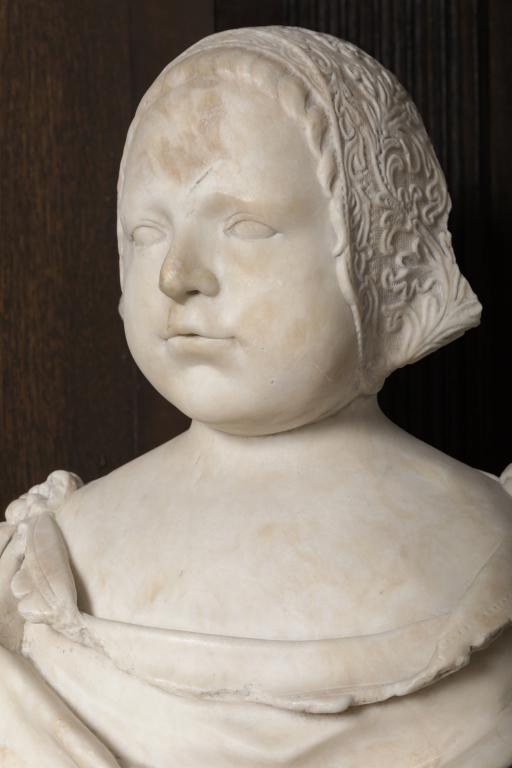


















































;%20by%20descent%20to%20A.R.%20Fordham%20Sotheby's%2015%20Nov.%201929%20(lot%2054)..jpg)





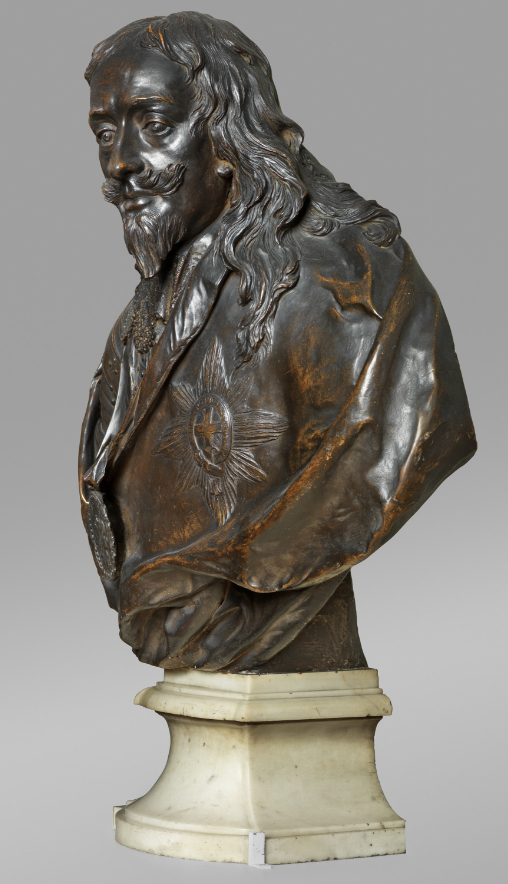




















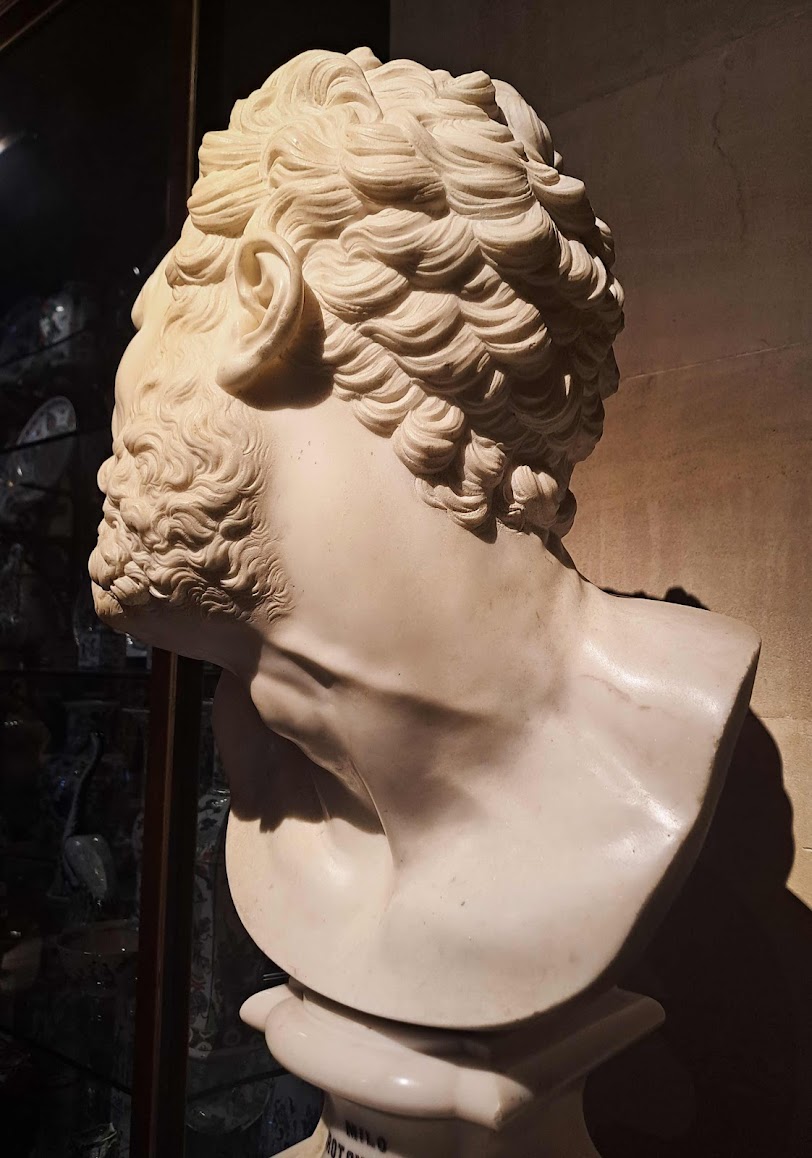



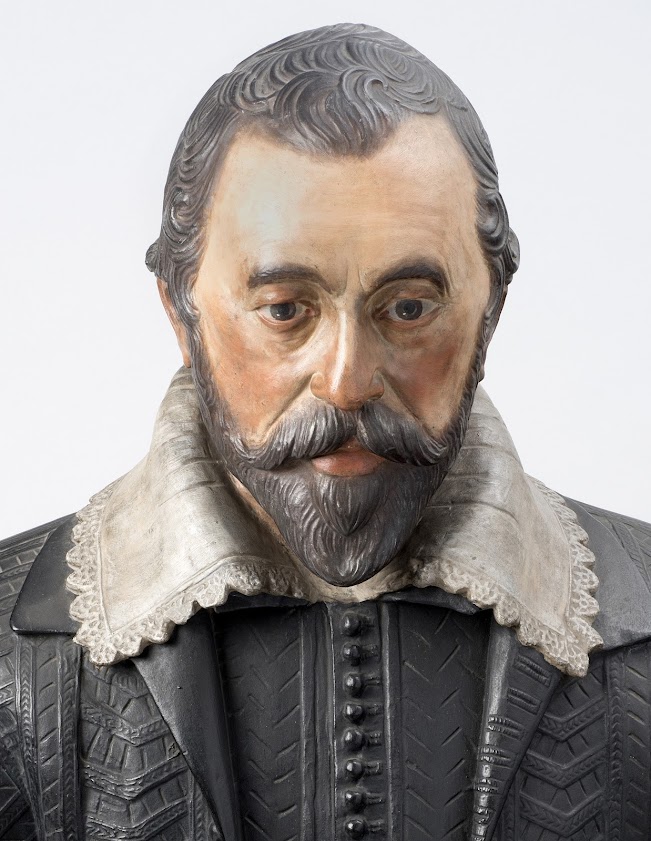
























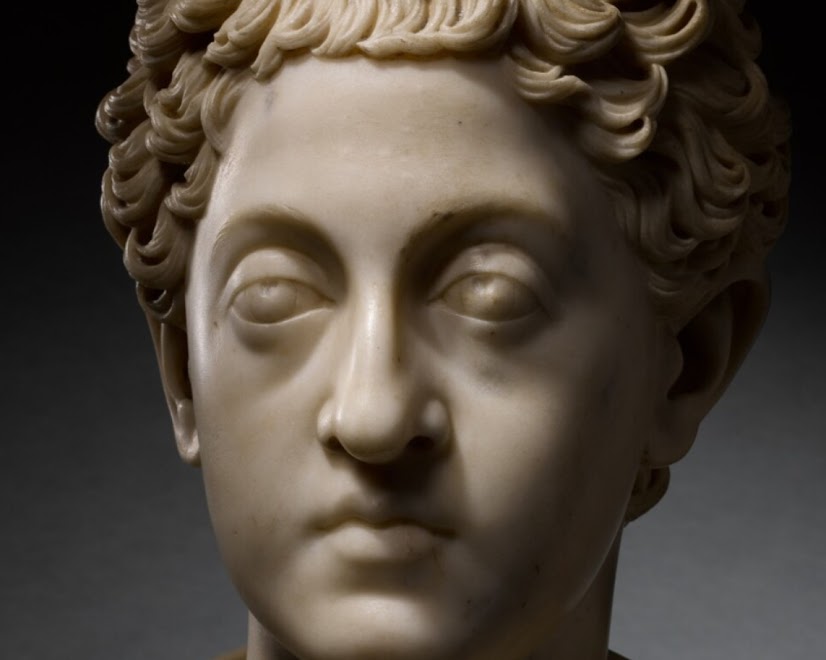





_02.jpg)
_04.jpg)